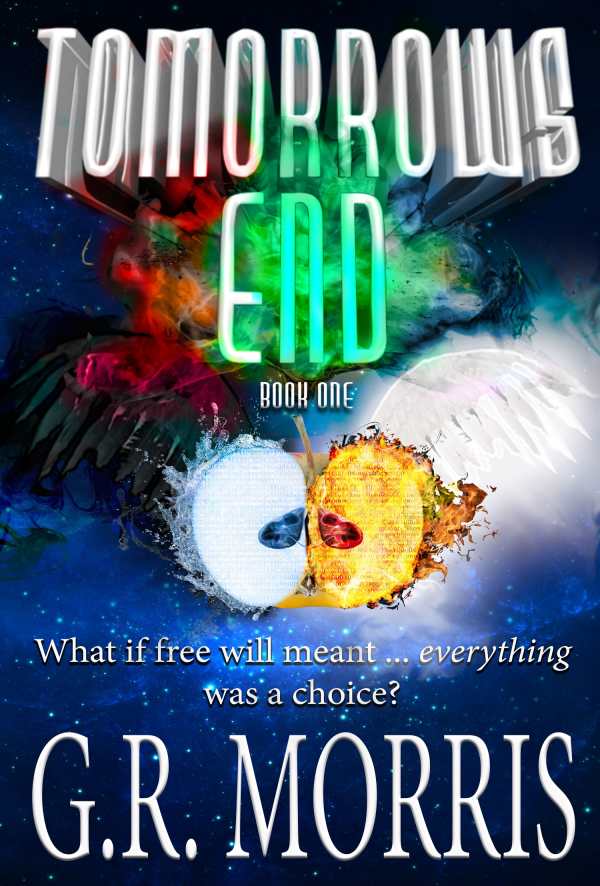Tomorrows End
Book One
Teenager Kevin Knight learns that he is a savior of the universe in this nonstop joyride of a sci-fi epic.
Tomorrows End is the first ambitious novel in G. R. Morris’s science fiction/fantasy series The Path of a Savior. In addition to the normal science fiction and fantasy tropes—like alien invasions, space travel, and time travel—Morris touches upon subjects as diverse as quantum physics, philosophy, and comparative religion. Yet every disparate element of the novel clicks into place like the uniform colors of a solved Rubik’s Cube.
Before moving back and forth in time, the story begins in what is labeled “Earth in a distant future.” A female super being named Wildfire, like a character right out of anime, decimates an alien army on a dystopian, war-ravaged, apocalyptic landscape: “It was a woman in a shiny black bodysuit held together by chaotic stitching and large safety pins … Bone-colored needlework was everywhere on her corset, including her chest, and for good reason: her breasts were almost bursting out of her outfit.”
Wildfire and her male counterpart, Nightstalker, are players in a scheme of good versus evil that establishes a savior for the universe. Somewhere else on Earth, in another time, Kevin Knight learns that an entity known as the Dragon wants him dead because he is part of a thousand-year plan. While Kevin undergoes intensive physical and mental training in preparation for his new role as savior, followers of the Dragon find his hiding place. Kevin not only fights for his life but the future of the universe which depends upon the outcome of this cataclysmic battle against the forces of hell.
Tomorrows End can be likened to Clive Barker’s fantasy and speculative novel Weaveworld juxtaposed with Frank Herbert’s Dune series. It pulls back the veil of the mundane and exposes strange worlds hidden in plain sight. And they’re inhabited by horrifying Barker-esque monsters breaking through barriers to devour our world. Morris writes, “Skinless Humans wrapped in churning barbed wire were breaking out of the flesh of the walls.” Expansive mythologies, prophecies, and religiosity prevalent in the works of Barker and Herbert are extensive in Tomorrows End.
Kevin Knight, like Herbert’s character Paul Maud’Dib, must experience difficult trials and tests before he reaches his full messianic potential. The following passage describes Kevin seeing into the structure of existence: “Kevin’s eyes flickered with light, and for a moment he could see more, the nucleus grouping and the element of light itself.”
The novel does contain some proofreading errors, as when Morris writes, “The metal cages fell like dominions” when “dominoes” is the correct word. Additionally, an overuse of descriptions for specific lengths, heights, and numbers of items detracts from the imaginative story line.
Overall, Tomorrows End is a nonstop joyride in a jacked muscle car with no brakes.
Reviewed by
Lee Gooden
Disclosure: This article is not an endorsement, but a review. The publisher of this book provided free copies of the book and paid a small fee to have their book reviewed by a professional reviewer. Foreword Reviews and Clarion Reviews make no guarantee that the publisher will receive a positive review. Foreword Magazine, Inc. is disclosing this in accordance with the Federal Trade Commission’s 16 CFR, Part 255.

